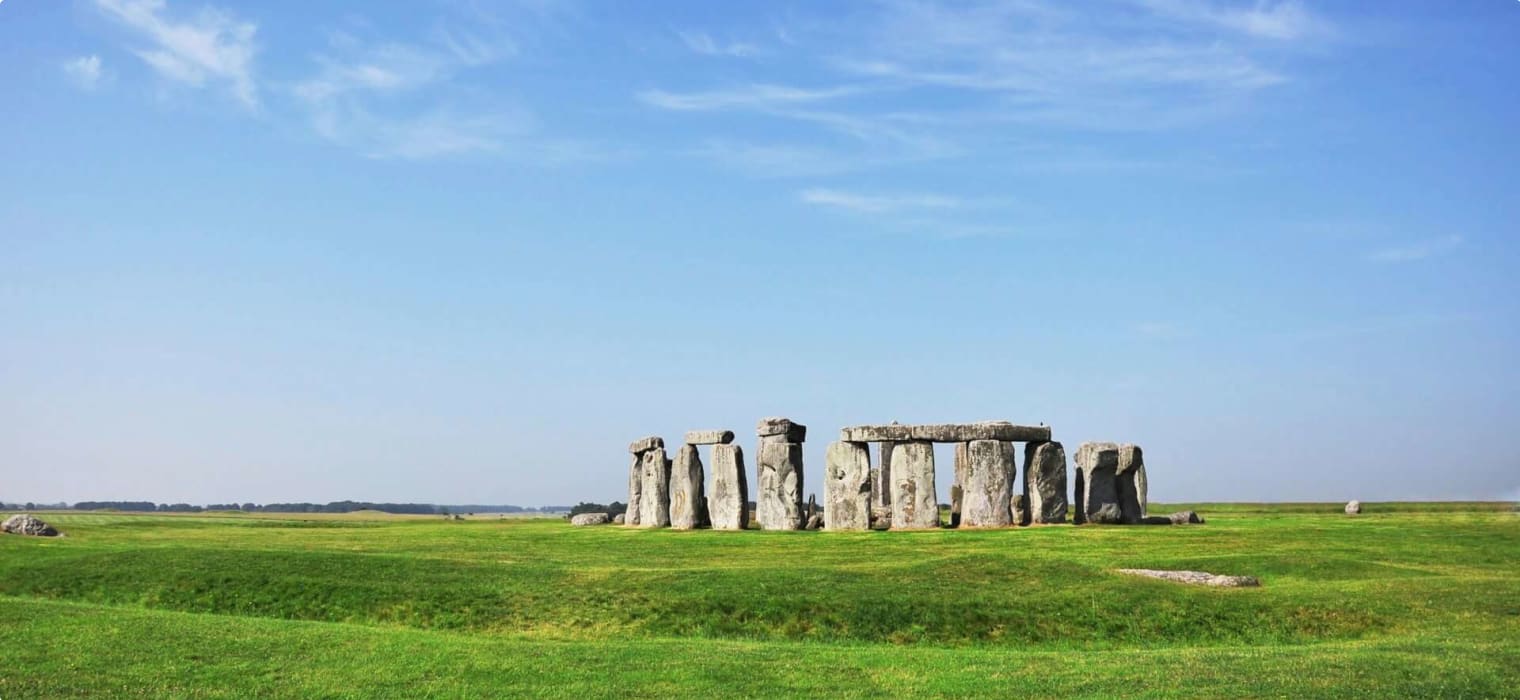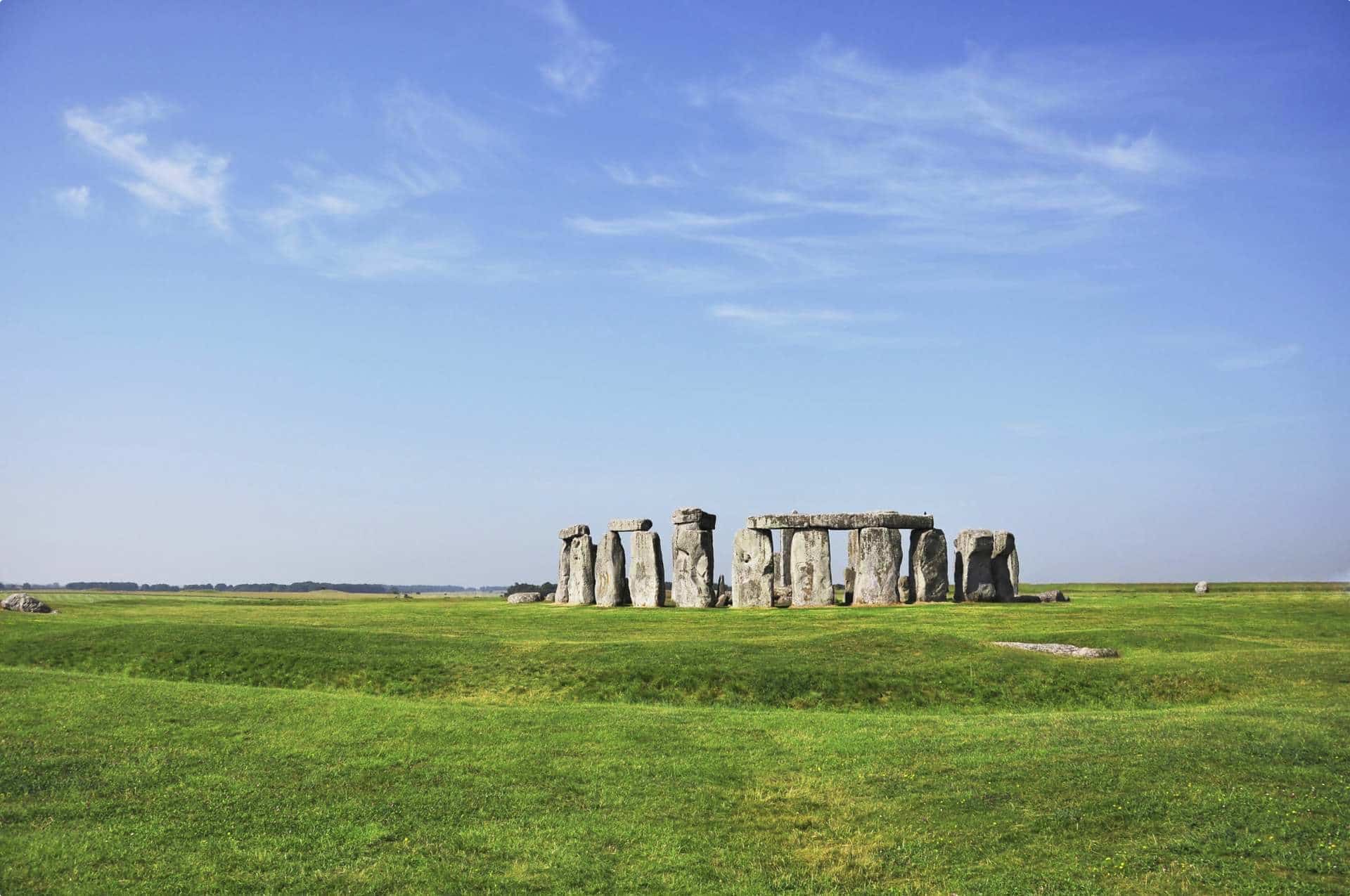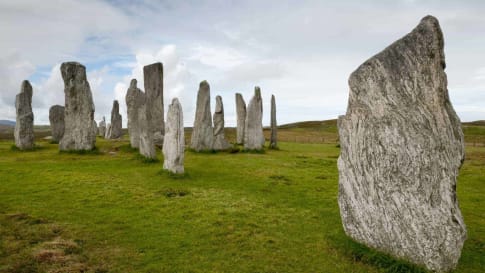Standing Stones in Prehistoric Britain
Standing Stones in Prehistoric Britain Stonehenge, England, United Kingdom The standing stones of Great Britain continue to be the subject of research and archaeological hypothesis. Britain is not the only location where standing stones are…
22 Aug 16 · 4 mins read

Standing Stones in Prehistoric Britain

The standing stones of Great Britain continue to be the subject of research and archaeological hypothesis. Britain is not the only location where standing stones are to be seen. In Brittany, France at Carnac, standing stones there cover several hectares of farmland. Following from an Odyssey Traveller article which found that neolithic burial chambers were telescopes to the stars, recent research at the University of Adelaide shows that standing stones in prehistoric Britain appear to have been constructed specifically in line with the movements of the sun and moon, 5000 years ago.
Odyssey Traveller has two tours–Prehistoric Britain and Scottish Isles–that visit these sites. These are both small group escorted tours with standing stones as an integral part of your journey. Click here for the Scottish Isles tours or click here for Prehistoric Britain.
Below is an extract from a University of Adelaide press release on their recent conclusions.
Standing Stones and Astronomical Phenomena
Research, published in the Journal of Archaeological Science: Reports, shows through 2D and 3D technology the patterns of alignment of the standing stones.
“Nobody before this has ever statistically determined that a single stone circle was constructed with astronomical phenomena in mind – it was all supposition,” says project leader and University of Adelaide Visiting Research Fellow Dr Gail Higginbottom, who is also a Visiting Research Fellow at the Australian National University.
Examining the oldest great stone circles built in Scotland (Callanish, on the Isle of Lewis, and Stenness, Isle of Orkney ─ both predating Stonehenge’s standing stones by about 500 years), the researchers found a great concentration of alignments towards the Sun and Moon at different times of their cycles. And 2000 years later in Scotland, much simpler monuments were still being built that had at least one of the same astronomical alignments found at the great circles.
The stones, however, are not just connected with the Sun and the Moon. The researchers discovered a complex relationship between the alignment of the stones, the surrounding landscape and horizon, and the movements of the Sun and the Moon across that landscape.
“This research is finally proof that the ancient Britons connected the Earth to the sky with their earliest standing stones, and that this practice continued in the same way for 2000 years,” says Dr Higginbottom.
Examining sites in detail, it was found that about half the sites were surrounded by one landscape pattern and the other half by the complete reverse.
“These chosen surroundings would have influenced the way the Sun and Moon were seen, particularly in the timing of their rising and setting at special times, like when the Moon appears at its most northerly position on the horizon, which only happens every 18.6 years,” Dr Higginbottom says.
“For example, at 50% of the sites, the northern horizon is relatively higher and closer than the southern and the summer solstice Sun rises out of the highest peak in the north. At the other 50% of sites, the southern horizon is higher and closer than the northern, with the winter solstice Sun rising out of these highest horizons.
“These people chose to erect these great stones very precisely within the landscape and in relation to the astronomy they knew. They invested a tremendous amount of effort and work to do so. It tells us about their strong connection with their environment, and how important it must have been to them, for their culture and for their culture’s survival.”
The research is part of the Western Scotland Megalithic Landscape Project carried out by Dr Higginbottom and Professor Roger Clay, astrophysicist at the University of Adelaide. Dr Andrew GK Smith developed the landscape software.
Learn more by reading this story from the Independent or by clicking on this article published in the Journal of Archaeological science about the standing stones.
See the Standing Stones with Odyssey
At Odyssey, we are passionate about stories and the road less traveled. Our tours are filled with hidden gems, designed around what makes places memorable, and we approach history from interesting and informed angles.
In our small group tour focused on Prehistoric Britain, for example, we take a scenic drive through England and the Scottish Highlands and visit several Neolithic Sites including the Uffington White Horse and the inspiring Stonehenge. We stay in a centrally located accommodation enjoying the scenery and experience.
Our journey through prehistoric history starts in Lerwick in the Shetland Islands of far north Scotland. Over the next 21 days this fully escorted Prehistoric Britain tour for the mature traveller moves south through Scotland, England and Wales. Your tour concludes with 3 nights in the city of Salisbury. During one of these days in Salisbury, you will have the opportunity to witness dawn at Stonehenge as part of a group visit.
On this guided tour we explore many of the most important prehistoric sites in Britain. You will visit:
- the classic standing stone rings in Orkney
- excavated villages in Shetland and the Orkney Islands
- the standing stones in the Outer Hebrides
- the tomb sites on the isle of Anglesey in Wales
- Rollwright Stones in the Cotswolds
- the stone circle of Castlerigg, set among the dramatic landscapes of the Lake District
- the vast circular earthen henges around Avebury and Stonehenge, a UNESCO World Heritage Site
Roam the Scottish Highlands and explore Edinburgh’s Royal Mile, or enjoy a vacation in London to view Trafalgar Square and St Paul’s Cathedral. View highlights such as Salisbury Cathedral, the Yorkshire Moors, and quaint villages in rural England.
If you would like to visit ancient rural Britain, Odyssey has a number of tours that might take your fancy. Our Roaming Rural Britain Tour and our Ireland and Lake District Walking Tour both take you on some of the best walks the British Isles have to offer. For an ancient historical focus, try our Prehistoric Britain Tour, which takes you to some of the most important prehistoric sites in the Western world.
For more on our varied tours of Britain, click here.
You can read our article on new discoveries about Britain’s Stone Circles.
Click through to read related articles:
Originally published August 22, 2016.
Updated on October 8, 2019.
Related Tours

21 days
AugPrehistoric Britain small group history tour including standing stones
Visiting England, Scotland
This guided tour invites you to explore UNESCO World heritage sites at Skara Brae in the Orkneys, Isle of Skye, and Stonehenge in a prehistoric tour. This escorted tour has trips to key sites in Scotland, and the Irish sea in Wales such as Gower Peninsula and National Museum in Cardiff and England. Each day tour is supported by local guides.
From A$16,750 AUD
View Tour
22 days
Apr, AugSeven Ages of Britain, snapshots of Britain through the ages.
Visiting England, Scotland
This guided small group tour starts in Scotland and finishes in England. On Orkney we have a day tour to the UNESCO World heritage site, Skara Brae, before travelling to city of York. Your tour leader continues to share the history from the Neolithic to the Victorian era. The tour concludes in the capital city, London.
From A$16,895 AUD
View Tour



